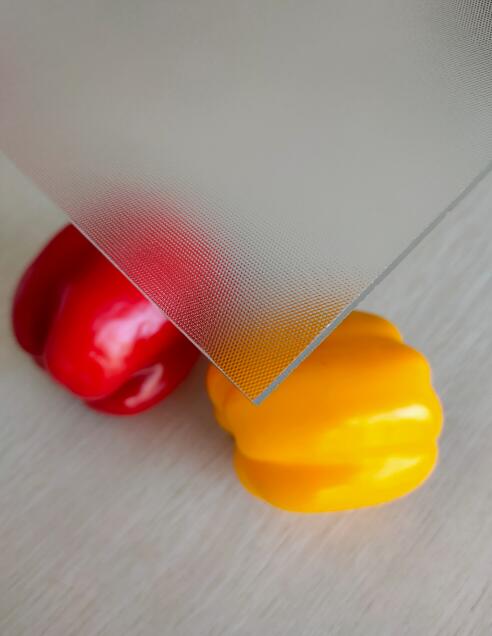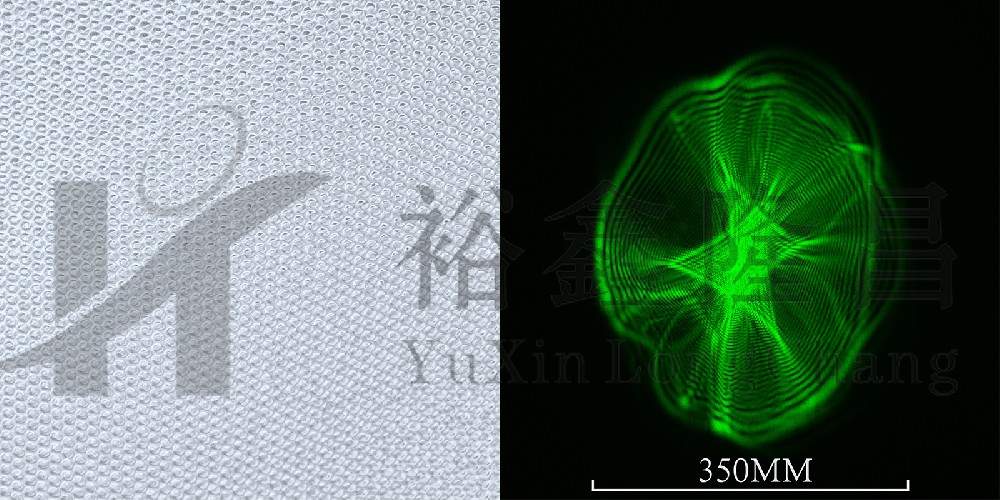
Final report Diffuse glass: methodology to compare practical data
The effect of diffuse light has been proven in research. In experiments with potted plants, rose and tomato, 5-11% higher yields were achieved under diffuse glass compared to clear glass with equal hemispheric transmission from the greenhouse deck. Therefore, diffuse glass can potentially contribute to the goal of profitable sustainable greenhouse horticulture, through the improved growing conditions (production and quality) without energy consequences. The final report of the project 'Diffuus Kasdek, make it clear' can be found in the downloads.

In practice, diffuse glass has found its way, but doubts arose. The doubt in practice comes from the fact that glasses not only change the diffusivity (=Hortiscatter) but also the light transmission at the same time and this cannot be seen separately on a greenhouse in practice because one always has to deal with the combination of at least 2 factors. That was the reason for doing this research, in particular a method to unravel light transmission and diffusivity in practice.
Practical results
A summary of research analyses and prioritises all factors that can lead to such a result. In high-rising crops, the most important factor seems to be that under diffuse glass the light penetrates the crop deeper, causing more photosynthesis than under clear glass. However, there are still few practical results that show this so clearly. Therefore, practical data of different crops and glass types were collected and analysed in this project. In total, five companies from a group of more than 35 potential participants remained with both a diffuse greenhouse and a clear greenhouse greenhouse, which were well comparable and willing to provide data. These companies grow cucumber, tomato and cherry tomato. In addition, one grower with clear glass and a greenhouse with clear glass with a double AR coating participated, in these greenhouses there was strawberry.
Higher yield
These greenhouses were monitored during the project. Climate data, light level at crop height and yield data were analysed to answer two questions: 'Does diffuse glass in practice result in a higher yield' and 'Does the energy use under diffuse glass differ from the energy use under clear glass'. Other questions about the lifetime of coatings and pollution also play a role with entrepreneurs. However, other separate projects have already been launched for this purpose and this is not directly the subject of this project. Because all participating companies, apart from the type of glass (clear/diffuse, various Hortiscatter levels), also other factors, such as planting date, lighting and cabinet transmission, had to be taken into account.
Production data
In addition, results had to be related to the literature, where the effect of diffusivity is separated as much as possible from the effect of light transmission, by using the 'Light Use Efficiency (LUE) as a measure. This is defined as: how many kilograms are harvested per unit of PAR light available at crop height. To determine this, the weekly production data related to the light sum (including exposure, where necessary) at crop height is of the participating companies, per crop. On average, the LUE (kg fresh harvest per mole light) in the diffuse greenhouses was 6% higher than the clear greenhouses.
Light transmission
Light transmission is a very relevant feature of the greenhouse roof and for an entrepreneur, the performance of the entire production system is a better measure than how efficiently the crop can handle the light transmitted or administered. A greenhouse roof with a lower transmission generally results in less production, because the rule of thumb 1% more light is about 1% more production still applies to these crops. If on a diffuse deck the light transmission decreases by 10%, even if the crop uses the transmitted light with a 6% higher efficiency, there is still a net production loss. Therefore, it was decided to also determine the 'Radiation Use Efficiency (RUE) to unravel the components of light transmission and diffusivity. RUE is defined as: how many kilograms are harvested per unit of available solar radiation. To compare the clear greenhouse and diffuse greenhouse as a production system, the RUE was calculated for both. The RUE is on average 8% higher in the diffuse greenhouses. In other words: per MJ global radiation 8% more kilograms are produced in the diffuse greenhouses compared to clear greenhouses. That light transmission is proportional to production has been demonstrated once again by analysing the company's data with standard clear glass and clear glass with anti-reflection coating.
Methodology
Prior to the study, many companies had the feeling that more needs to be fired under diffuse glass. However, this study shows that for all participating crops, on average, there was no difference in energy consumption between the diffuse and the clear greenhouse. The energy efficiency in the diffuse greenhouses was on average 12% higher compared to the clear greenhouses. In addition to the effect of diffusivity, the fact that all diffuse greenhouses (except one) included in this study also had a higher transmission. So more sunlight, free energy, enters these greenhouses.
Within this research, a methodology has been developed to be able to compare the data of practice companies with each other despite the problem that companies, greenhouses on companies and crops in greenhouses are never completely the same as would be the case in a research greenhouse. This methodology could be used in the future to analyze data from practice companies in an anonymised and standardized way.
Tags:anti-reflective glass diffuse glass agricultural greenhouses glass greenhouse venlo greenhouse AR glass greenhouses glass agricultural glass horticultural glass #greenhouseglass #Antireflectiveglass #Diffusetemperedglass #Ultrawhitefloatglass #agriculturalgreenhouseglass #diffuseglass #horticulturalglass #Tomatogreenhouse #Coloredpeppergreenhouse #Lettucegreenhouse #Agriculturalgreenhouse #ARglass #venlogreenhouse #greenhouseglass #Antireflectiveglass #Diffusetemperedglass #Ultrawhitefloatglass #agriculturalgreenhouseglass #diffuseglass #horticulturalglass #Tomatogreenhouse #Coloredpeppergreenhouse #Lettucegreenhouse #Agriculturalgreenhouse #ARglass #venlogreenhouse #GlassManufacturer #invernadero
Previous:Greenhouse diffuse reflective glass is no longer questioned? Researchers provide comparative methods



















